Southampton is slowly establishing itself as an unlikely hotbed for retail reinvention.
John Lewis’ “experience playground” launched in the city’s Westquay shopping centre in November as it ramped up its focus on services, not just shopping.
A five-mile drive East over the River Itchen is Hedge End, which plays host to a clutch of other retailers giving their glimpses into the future of bricks and mortar.
Next launched one of its biggest out-of-town stores here some years ago, which has evolved to host a Costa Coffee, a WHSmith stationery concession and shop-in-shops from O2 and Virgin Holidays.
And just a stone’s throw away, an increasingly ferocious grocery war is raging.
At its capital markets day last September Sainsbury’s showed off its revamped Hedge End supermarket to analysts and investors. The store has brought in a number of concession partners, extended the space dedicated to clothing and general merchandise and enhanced the catering offer.
Just before Christmas, neighbour Marks & Spencer lifted the lid on a root-and-branch refurbishment of its own as it bids to encroach on Sainsbury’s grocery territory and establish itself as a destination that shoppers don’t just visit for a treat, but for their regular, weekly shop.
But who comes out on top in the battle of Southampton’s zhooshed-up supermarkets?
Lessons from Selly Oak
Sainsbury’s said its Hedge End revamp benefited from learnings from its “experiment” in Selly Oak, Birmingham – a bold new store format that gained rave reviews upon opening a year ago. The 67,000 sq ft store signalled a new big-box direction for JS, featuring new-look toys and homewares departments, a 180-seat Food Market, a dedicated wellness aisle, an Oasis concession and a revamped beauty zone that has now been replicated in 100 other Sainsbury’s supermarkets.
On this viewing, however, it seems Sainsbury’s could have transported more lessons down the M40 to Hedge End, which very much feels like Selly Oak’s poorer sibling.
The Fresh Kitchen dining area at the front of the store offers a much more limited proposition than the Selly Oak equivalent, where shoppers could select from various cuisines including Chinese and Indian.
Grocery aisles feel narrow and almost claustrophobic at times, particularly on a busy shopping day during the peak Christmas trading period.
And although concession partnerships with Lloyds Pharmacy, Specsavers and Timpson offer customers a clutch of useful services, there is a sense that Sainsbury’s could have been more ambitious with its third-party tie-ups, particularly when it works with retailers such as Oasis, Fat Face and Regatta in other stores.
With a vast M&S clothing offer just next door, the addition of one or two apparel tie-ups could have given shoppers one less reason to cross the divide.
It is perhaps unfair, though, to compare Hedge End too directly with Selly Oak. After all, Sainsbury’s Darren Sinclair, who oversees 550 stores as zone manager for its Central region, told Retail Week last year that Selly Oak was very much “a one-off”, rather than a blueprint of what its largest stores will become.
“It is a shame that Sainsbury’s focus on enhancing its non-food proposition has not been replicated in the grocery aisles, which could have done with much more in the way of TLC.”
There do remain a number of things to admire about Sainsbury’s Hedge End branch. The toys section is again designed to be interactive, with wider aisles allowing children to try out some of the products on sale.
Sainsbury’s has brought in its new-look beauty zone, showcasing big brands like L’Oreal, Revlon and Max Factor in a way that puts some Boots or Superdrug stores to shame.
The fish, meat, deli and hot food counters are bright, welcoming and well merchandised – especially the former, which is head and shoulders above the sort of seafood displays often seen at Sainsbury’s mainstream competitors.
The Tu clothing area represents a big upgrade. More room has been turned over to the grocer’s own fashion brand, with differentiated signing creating a near shop-in-shop feel.
The homewares department is arguably the star of the show. The retailer blends its Sainsbury’s Home products with Habitat-branded goods to create a more seamless shopping journey, with small room layouts allowing customers to visualise how certain products may look in their own homes.
It is a shame that Sainsbury’s focus on enhancing its non-food proposition has not been replicated in the grocery aisles, which could have done with more in the way of TLC as part of this makeover.
Swimming upstream
Next door, the impressive work of Marks & Spencer has only served to highlight those particular shortcomings.
The retailer’s foodhall has doubled in size to 26,000 sq ft, having taken a chunk of space previously dedicated to menswear. Although it remains smaller than Sainsbury’s, the old adage “size doesn’t matter” rings true here.
Simply put, M&S has swum upstream at a rapid pace – and left Sainsbury’s trailing in its wake.
The M&S store represents the closest thing to the American-style food markets operated by retailers such as Walmart as is likely to be seen on British shores.
Lowered central islands and shelving units remove the enclosed feeling experienced next door in Sainsbury’s, creating an open and airy ambience by giving customers line of sight across the store.
Loose fruit and veg is displayed in wooden crates, replicating the look and feel, as well as the impression of quality and freshness, of a local market stall.
M&S has swum upstream at a rapid pace – and left Sainsbury’s trailing in its wake.
Shoppers can even pick their own eggs and tomatoes in the same way they would down the market, while staff have levels of knowledge that would be expected from local traders – each shopfloor worker has their own specialist section, so they can help customers select the right herbs and spices or pair a wine with their dinner, for instance.
On the far side of the shop, M&S’s counters offer a genuine point of difference. It has installed its first in-store chicken rotisserie, alongside a rotating pizza oven, both of which combine to offer quality hot food as well as a bit of retail theatre.
Pasta Evangelists has opened its first concession inside an M&S store, where chefs hand-make an array of fresh pasta from scratch every morning alongside accompaniments such as beef shin ragu and meatballs.
And the Prep Kitchen offers shoppers the option of customising their own meat and vegetable tray bakes, either to take home and put in the oven, or to be cooked for them on site.
Another new addition is the ‘Fill Your Own’ section as M&S continues to ramp up its sustainability credentials. In a similar vein to the trials undertaken by Waitrose, shoppers can fill paper bags or Tupperware tubs with a range of products including rice, pasta, muesli, nuts and chocolate-coated snacks. M&S has ensured that the price per kilo is the same on all of the loose products as the pre-packed alternatives.
Big-basket appeal
The proposition has expanded in other ways too, as M&S attempts to become a destination for the “family shop”. The frozen section has increased by a third in size, with more freezer space given over to popular brands such as Quorn and Birdseye.
Dedicated aisles for other household categories such as baby, pets, laundry and cleaning serve to further plug the sorts of gaps that might prevent a customer carrying out a full shop at M&S.
Alongside all of those noticeable improvements, it is the little touches and forensic attention to detail that make this store a real crackerjack.
Wicker shopping baskets are offered to customers doing smaller top-up shops, further adding to the food market feel.
In the bakery section, a red light bearing the words ‘Baking Now’ illuminates when a new batch is being prepared – and bakers ring a bell to alert shoppers that fresh bread hot from the oven is about to hit the shelves.
“The big question that remains for M&S is how scalable this sort of proposition really is.”
And Sparks loyalty card holders can make use of a free, self-serve wine tasting station to help them pick the right bottle for their particular occasion.
The big question that remains for M&S is how scalable this sort of proposition really is. Hedge End is its third refitted store – following revamps in Hempstead Valley and Clapham – all of which represent important steps in the right direction in the retailer’s efforts to cater for larger baskets.
But refurbishments as striking and wide-ranging as this come at a cost and rolling them out on a national basis – at a time when M&S is already spending £750m on a joint venture with Ocado and investing heavily in price – is likely to prove impossible.
At Hedge End, though, M&S emerges as the clear winner. Sainsbury’s may like to trumpet its differentiated food offer, but only its next-door neighbour can seriously lay claim to displaying that here.
M&S’s clothing division may represent a perennial problem, but Hedge End offers further proof that its food arm is rapidly raising the bar. This store is a statement of intent that Sainsbury’s and its other grocery rivals simply cannot ignore.




















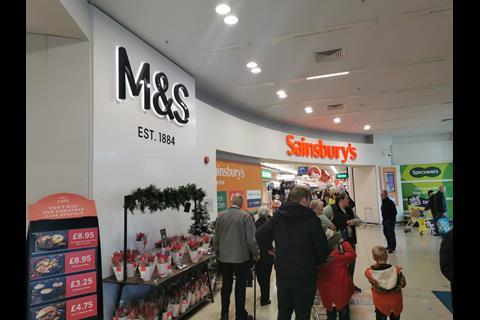
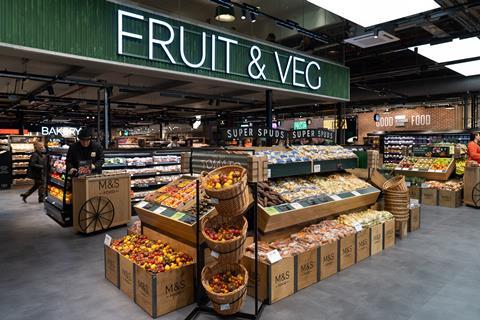
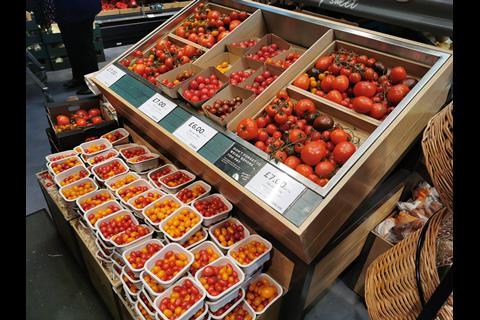
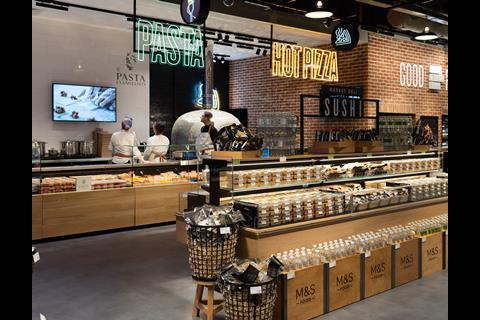




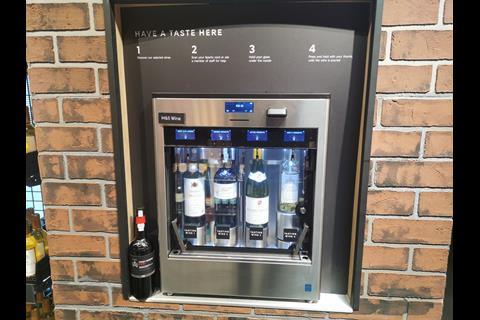
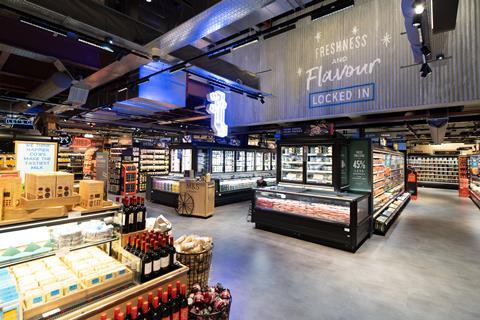
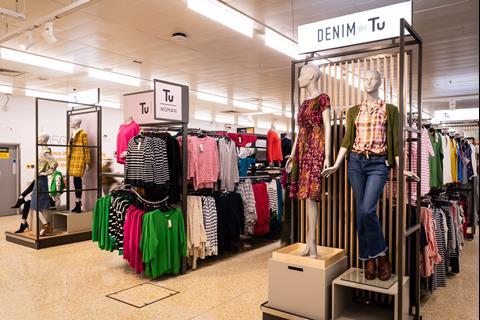
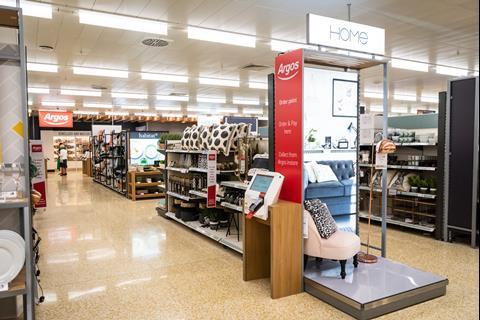
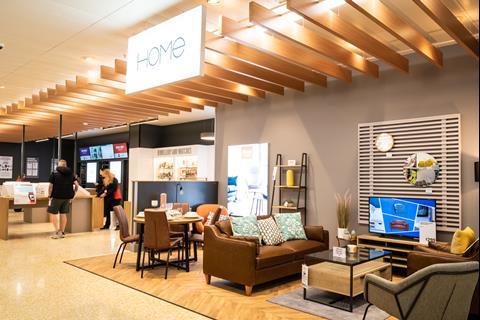

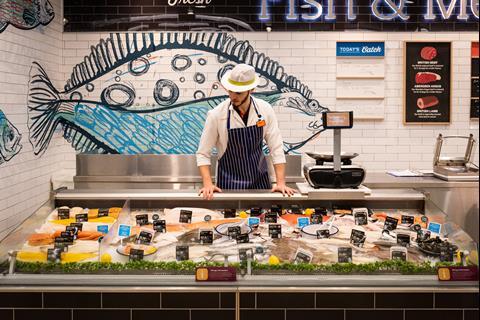
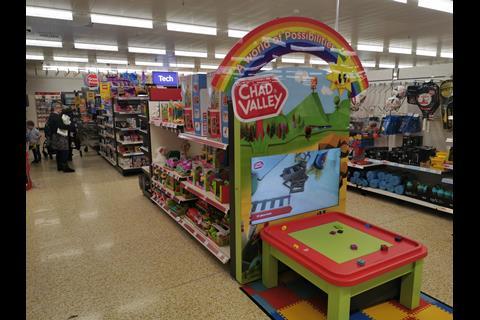
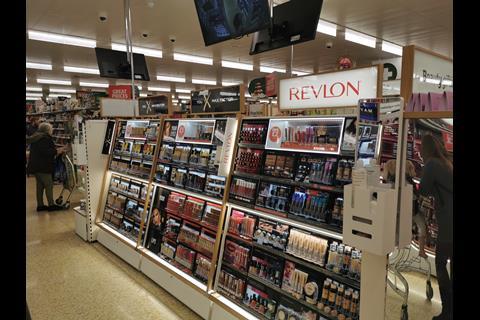


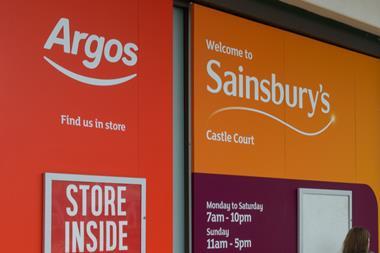


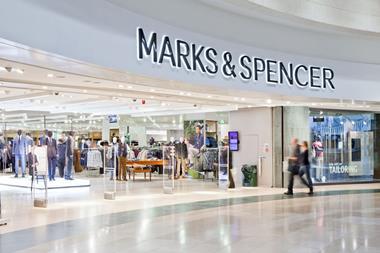
1 Reader's comment